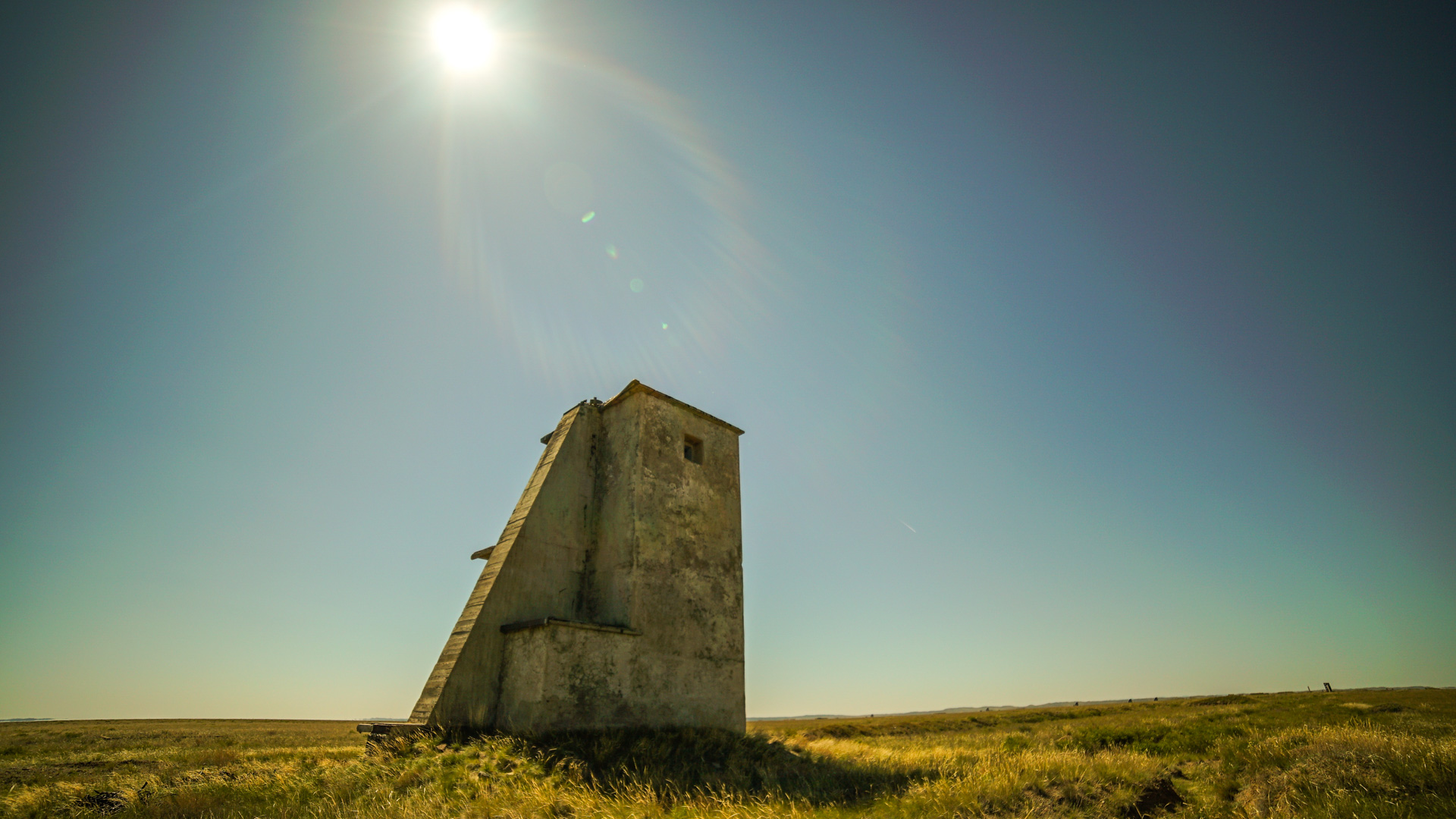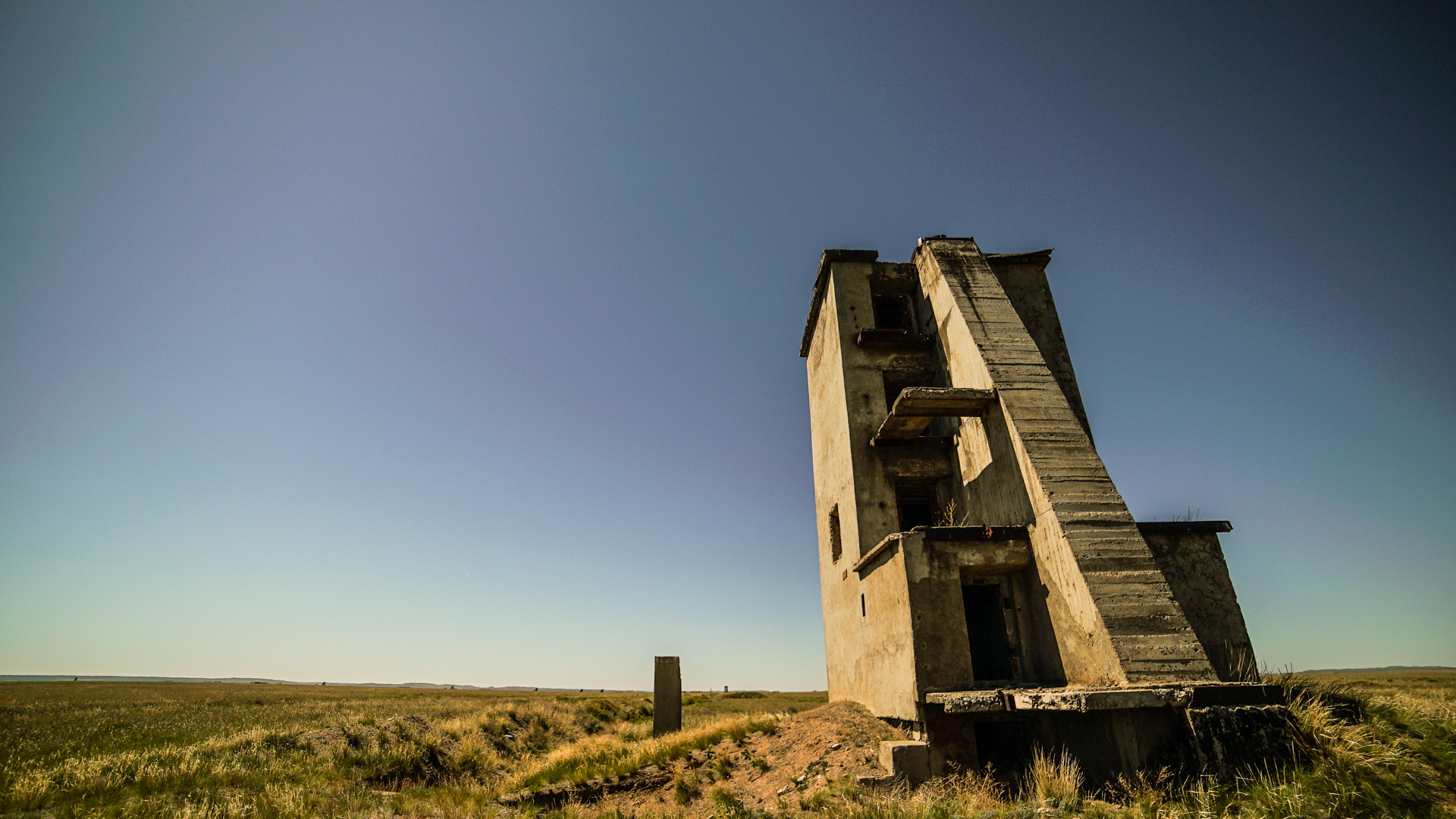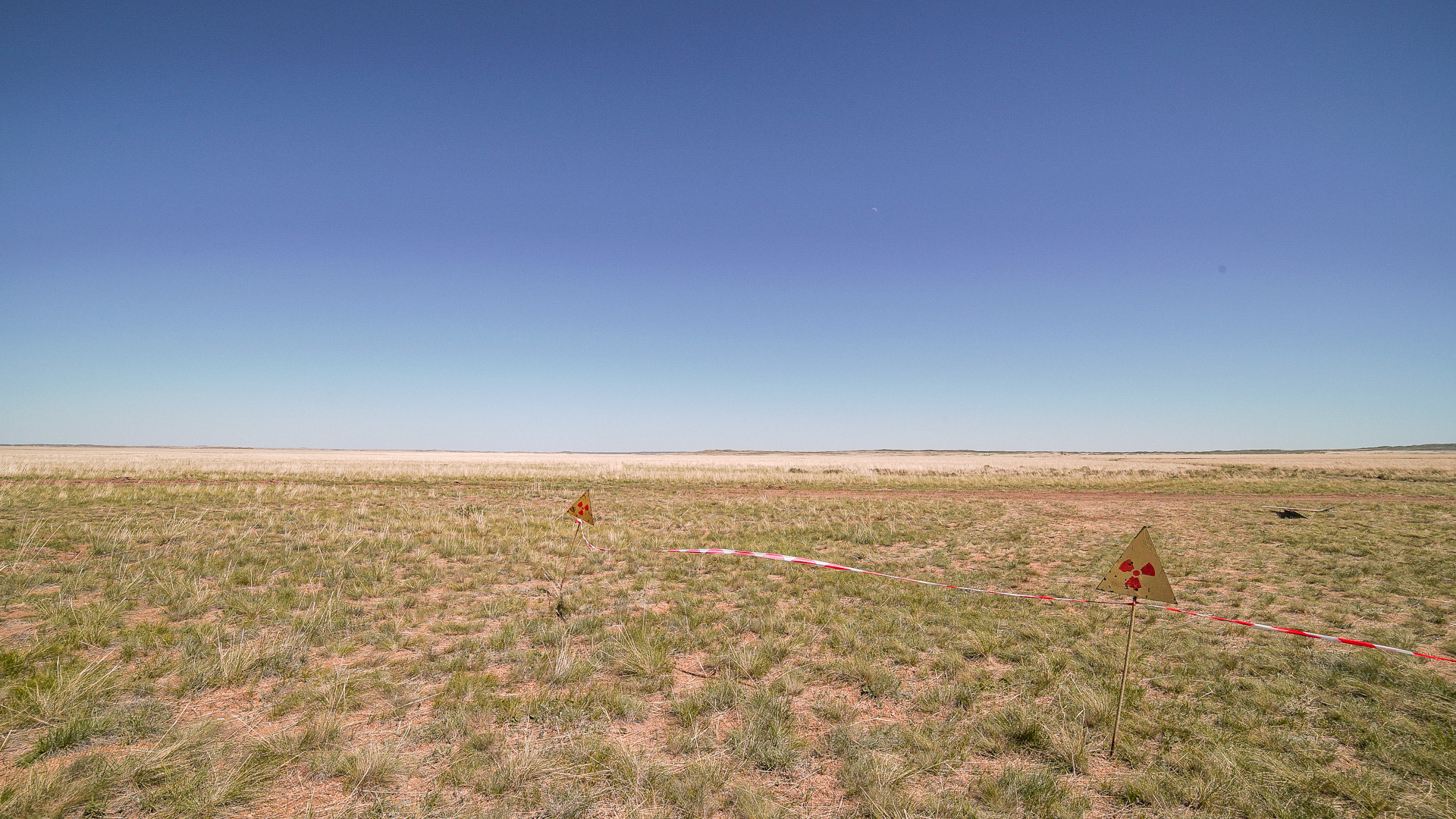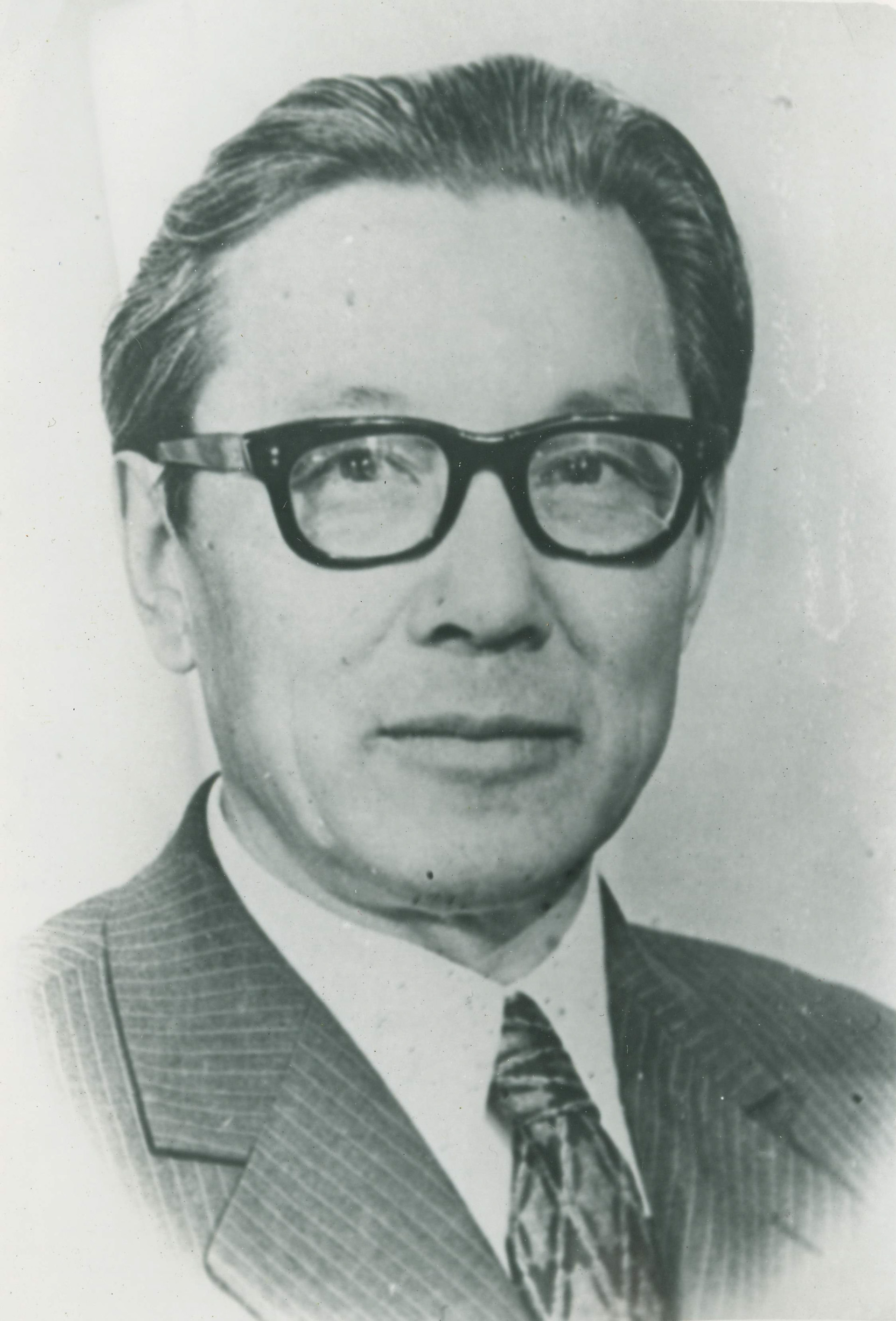On August 29, 1949, a 22-kiloton nuclear bomb exploded in Kazakhstan and marked the beginning of the dark history of USSR’s Semipalatinsk test site (STS), known as the “The Polygon.”
Semipalatinsk test site’s 18,500-square-kilometer territory lay in the steppes of North-east Kazakhstan.

Within 40 years (1949-1989) of tests at STS, Soviet militaries and scientists conducted over 460 explosions of nuclear, thermonuclear and hydrogen weapons: underground and aboveground.

Photo by Timur Nusimbekov
Radioactive clouds of 55 overground tests and gas fractions of 169 underground tests expanded beyond the Polygon’s territory, causing massive exposure of Eastern Kazakhstan to radiation.

Photo by Timur Nusimbekov

The tests were conducted nearby residential areas of Eastern and North-eastern Kazakhstan which caused heavy mortality and has had a serious negative impact on the health of several generations of people.
Despite the fact that the Soviet militaries, authorities and scientists were aware of the enormous harm that nuclear tests caused to the population of Eastern Kazakhstan, the experiments continued until 1989. Over a million of people in Kazakhstan suffered from the impact of nuclear tests. Residents of territories around the Semipalatinsk test site received irreparable harm to their health: cancer, neurological disorders, radiation sickness... Thousands of children in East and North-east Kazakhstan were born with serious congenital illnesses due to radiation exposure. Nuclear explosions at the site caused the premature death of thousands of citizens.
A significant part of the territories of the Semipalatinsk test site and the adjacent areas of Pavlodar, Semipalatinsk, East Kazakhstan and Karaganda regions were recognized as environmental disaster zones. Some of the radiation-induced areas of the Polygon will remain dangerous and unsuitable for life for over a thousand years.

Photo by Timur Nusimbekov
According to the estimates by the Institute of High Energies of the Academy of Sciences of Kazakhstan, the overall power of nuclear weapons tested in the atmosphere and under the ground of the Semipalatinsk test site exceeded the power of the atomic bomb dropped on Hiroshima in 1945 by 2.5 thousand times.

Photo by Timur Nusimbekov
Semipalatinsk test site is the largest nuclear test site of the twentieth century. Despite the dangers posed by some parts of this area, STS is the only nuclear test site in the world that has areas still inhabited by people. After the 1990s, economic hardships forced some of the locals to practice dismantling and cutting abandoned metal structures and communication lines of the site’s military infrastructure despite their significant radioactive contamination and the serious hazard to life.
Nuclear tests at the Semipalatinsk test site were discontinued as a result of the efforts by the citizens of Kazakhstan who demanded the closure of the test site in the late 1980s. Bahiya Atchabarov, Saim Balmukhanov, outstanding scientists and doctors, along with their like-minded colleagues had a significant influence on the termination of nuclear tests at STS.


Balmukhanov and Atchabarov initiated the scientific and civil work on ending nuclear tests. Despite being subjected to pressure from the Communist Party, KGB and Soviet military authorities, they conducted significant scientific and field work in the test site area. Starting from the 1950s, Atchabarov, Balmukhanov and their colleagues had been collecting data on the terrifying impact of nuclear tests on the people of Kazakhstan. Their findings lay the foundation for an anti-nuclear movement that in late 1980s became known as Nevada-Semey. That was the first major movement of environmental activists in the history of Kazakhstan. People from other republics of the USSR and other countries of the world joined them. On August 29, 1991, the Semipalatinsk nuclear test site was officially closed.

